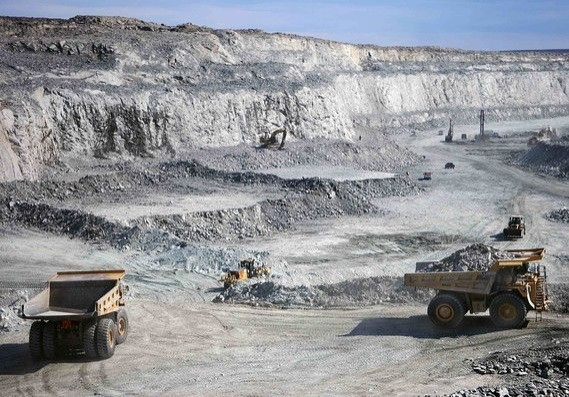Gold Eases as Euro Declines, but Investor Demand Remains

(REUTERS) -- Gold eased on Monday, under pressure from a weaker euro, but was off session lows and still within sight of last week's seven-week highs, supported by evidence of improved investor demand.
The euro slid by 1 percent from six-week highs against the dollar, while U.S. shares fell in early trade on the back of concern about the lack of progress in negotiations over a Greek debt swap, which also pushed up the risk premium on European government bonds.
European leaders struggled to reconcile austerity with growth on Monday at a summit due to approve a permanent rescue fund for the euro zoneand put finishing touches to a German-driven pact for stricter budget discipline.
Last week, the gold price staged its largest weekly rally in three months to reach a high of $1,739 an ounce after the Federal Reserve signalled it expected no change to near-zero U.S. interest rates for nearly three years and data showed the U.S. economy grew more slowly than expected in the final quarter of 2011.
Spot gold was down 0.5 percent at $1,728.75 an ounce at 1535 GMT but up from the intraday low at $1,716.19 and also set for a 10 percent gain in January, its strongest monthly rise since August's 12 percent rally.
Analysts said they expected gold to recover from Monday's bout of weakness, especially given the impasse over the restructuring of Greece's debt burden.
Until we until we get some kind of resolution in these discussions on Greek debt and what the bondholders are going to accept as a haircut, then that is still going to be a live issue for the market, Credit Suisse analyst Tom Kendall said.
If the perception of risk related to that increases, then you'll probably see an acceleration of the flow of cash out of peripheral European countries and some of that will undoubtedly make its way into gold, he said.
Reflecting investors' improved appetite for gold relative to the end of 2011, data on Friday from the Commodity Futures Trading Commission showed speculators in U.S. gold futures raised their holdings for a third week in a row, marking the longest stretch of increases in the net non-commercial position on COMEX in six months.
Also, holdings of metal in exchange-traded funds backed by physical gold, often used by analysts as a gauge of more immediate switches in investor demand, rose by nearly 200,000 ounces last week to 69.324 million ounces, their highest since late December, following inflows of metal into the SPDR Gold Trust, the world's largest gold ETF, as well as into the ETF Securities' Swiss gold fund.
EURO WEIGHT
Dragging on gold was the decline in the euro against the dollar from six-week highs after investors took profits made on its strongest weekly rally in more than a quarter and awaited news of a deal on Greece's debt.
Prime Minister Lucas Papademos sought backing on Sunday from Greek party leaders for painful and unpopular reforms.
Gold's correlation with the equity market has fallen in the last week to its least positive in three months, while that with the euro has held steady in positive territory, indicating the likelihood that the bullion price will move in tandem with the single European currency.
UBS analyst Edel Tully noted the erosion in gold's direct relationship with the equity market.
Does this mean that gold has finally broken its ties with risk? One day clearly doesn't make a trend, and the sluggishness in equities ahead of the weekend was likely in part driven by profit-taking rather than a risk-off turn, especially given easing peripheral bond yields, she wrote.
Nevertheless, it is certainly an encouraging development and does increase the possibility that there is more to gold's rally. It may well be a clue that investors have shifted gears and are now starting to put more conviction behind their bullish gold outlook, she said.
Gold priced in euros was down 0.4 percent on the day just below 1,310 euros an ounce, having hit a 2-1/2 month high at 1,318.19 euros last week.
In other precious metals, platinum and palladium fell under pressure from the dollar's strength and from more modest risk appetite.
Supply disruptions in top platinum producer South Africa last week and the potential for electricity shortages in the country has put the platinum price on track for its biggest monthly gain in almost four years.
The platinum price, down 0.6 percent on the day at $1,605.74 an ounce, has risen by nearly 15 percent in January, the largest rise since the 25 percent increase in February 2008.
The rising price resulted in a sharp pick-up in investor demand for both platinum and palladium last week.
The CFTC data showed speculators brought their holdings of U.S. platinum holdings to their highest level since September.
Palladium was quoted down 0.4 percent on the day at $683.00 an ounce, while silver fell 1.5 percent to $33.43 an ounce.
© Copyright Thomson Reuters 2024. All rights reserved.






















